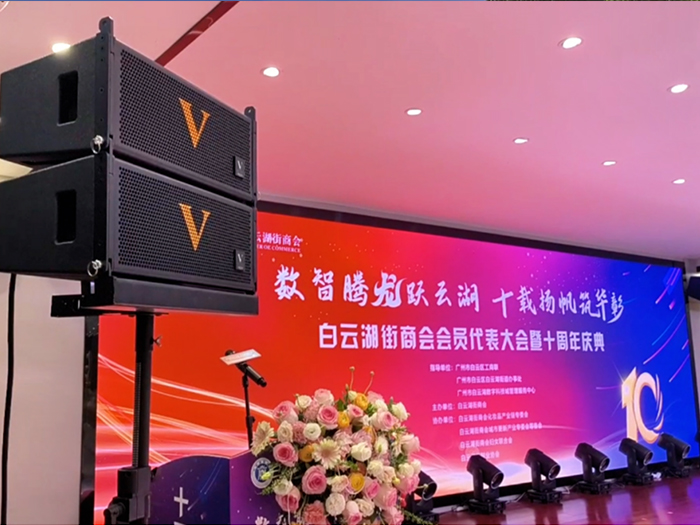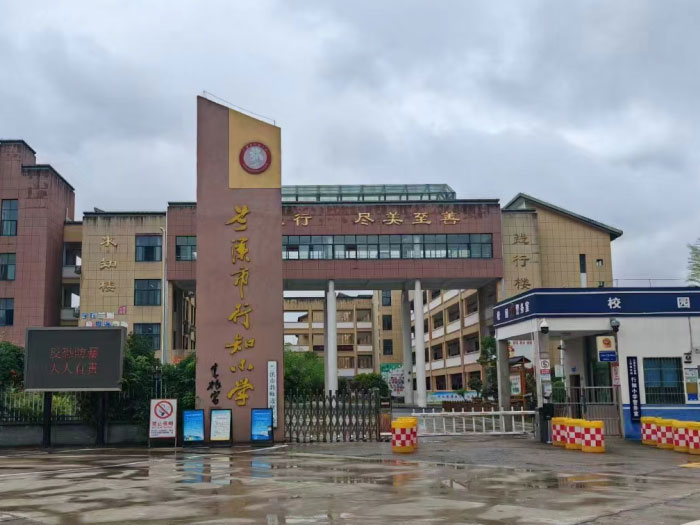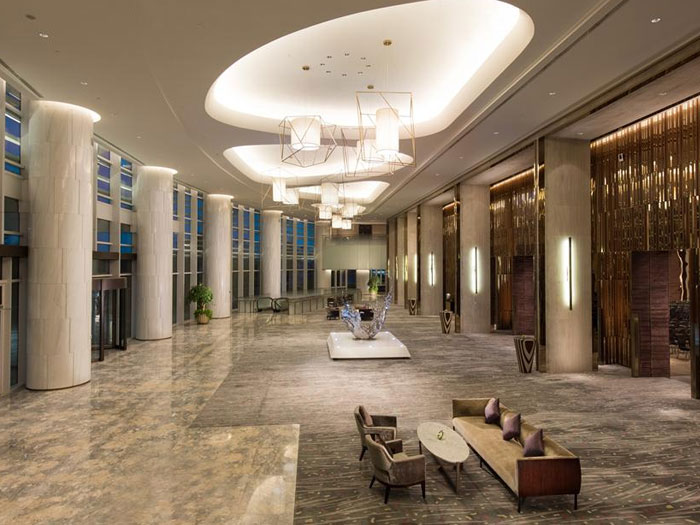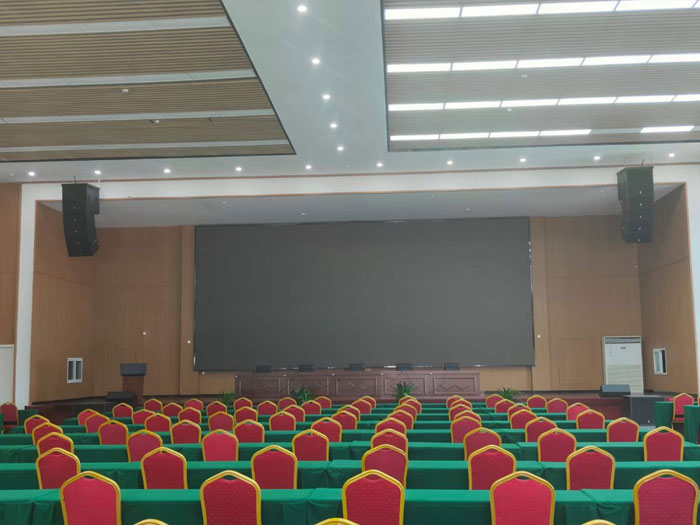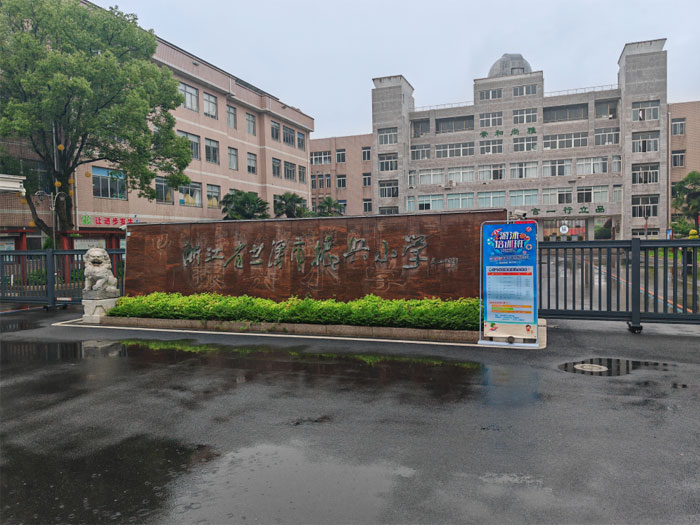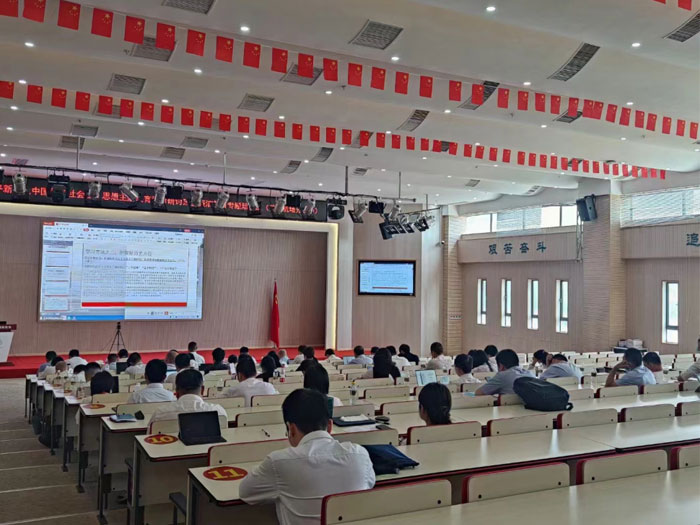Application Case of Professional Sound System at the Site of the First National Labor Congress
12-18-2024 Views:220 Times
The Former Site of the First National Labor Congress
The first National Labor Congress was held in Guangzhou from May 1st to 6th, 1922, which had a profound and important historical background. At that time, the CPC had just been established in July 1921, and the first resolution of the party was passed at the first party congress, which stipulated that the basic task of the party at present was to establish industrial trade unions. In August of the same year, the Party leadership established the Secretariat of the Chinese Labor Union, which gradually led to the rise of the national workers' movement. Strikes occurred one after another in various regions. For example, in January 1921, Chinese sailors in Hong Kong held a massive strike to improve their treatment, pushing the first nationwide strike to its peak and achieving victory, which gave great encouragement to workers in other industries.

Introduction to Old Site Buildings and Functions
The former site of the First National Labor Congress is located at 230 Binjiang West Road, Haizhu District, Guangzhou, consisting of two buildings in the north and south. The Western style concrete main building to the north was first built in the 1920s and was the office space of the Guangdong Machinery Workers' Union at that time. The main building has a unique architectural charm that has undergone changes over time and still retains many of its original features, such as wooden spiral stairs, narrow corridors, old-fashioned terracotta bricks, Western style fireplaces and doors and windows. These elements combine Russian architectural style with the scent of old Guangzhou, making people feel like they can travel through time and experience the atmosphere of the past.
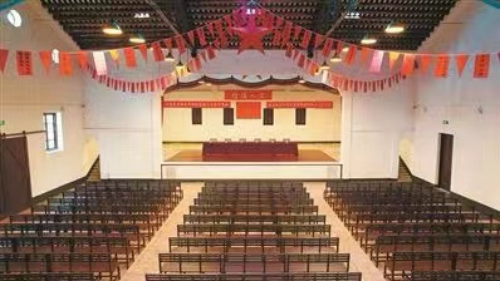

The building to the south is a brick and wood structure auditorium, which was the venue of the first National Labor Congress. The interior space of the auditorium is grand and spacious, featuring a Chinese style brick and wood structure with a golden roof, a roller grey tube tile roof, and a light yellow exterior wall, giving it a unique and rustic style. As early as the spring of 1921, the early organizations of the Communist Party in Guangzhou established workers' night schools and carried out revolutionary activities here, cultivating strength and spreading ideas for the revolutionary cause.
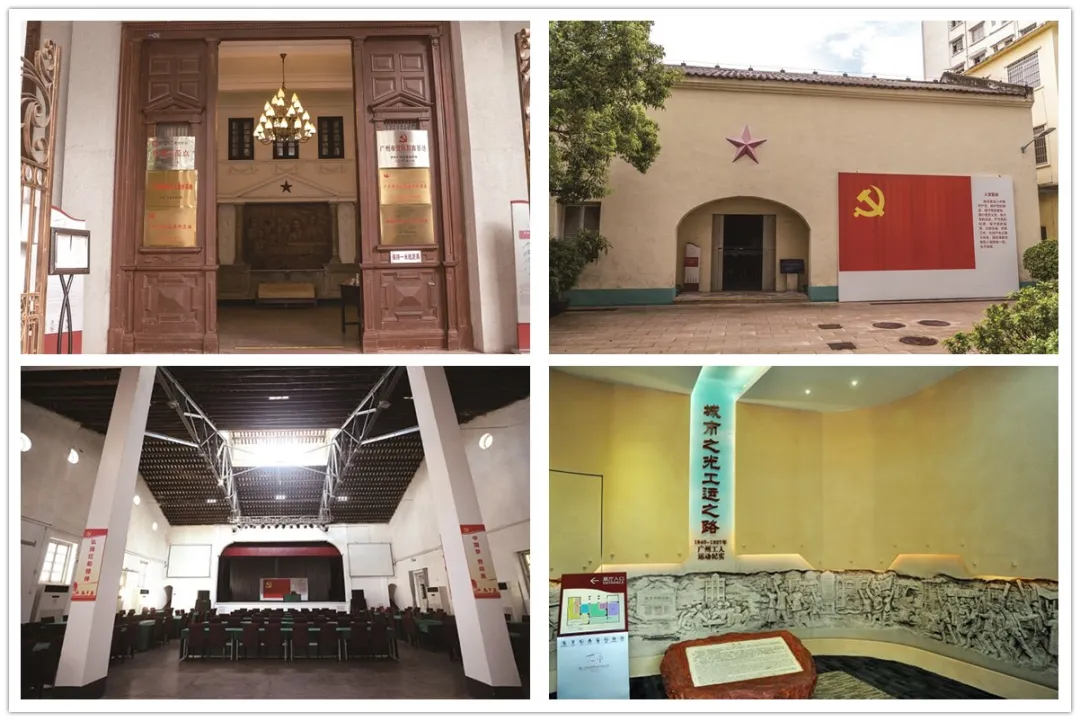
Nowadays, this old site has inherited many important functions. It is a good place for employee education and training, where various training activities can be carried out to enhance the professional skills and comprehensive quality of employees; It is also a preferred location for holding conferences, with its profound historical heritage and ample space, adding a unique atmosphere to various conferences; In addition, performance activities can also be carried out to better spread and promote red culture through artistic performances and other forms, allowing more people to understand the magnificent history of the labor movement and the great spirit it carries. It has become an important red cultural battlefield in Guangdong Province and even the whole country, playing an irreplaceable role in education, propaganda, and other aspects. It is also a business card of great historical and cultural value in Haizhu District, Guangzhou.
Requirement Analysis of Old Site Sound System
Activity type requirements
The various activities held at the site of the first National Labor Congress have diverse and strict requirements for the sound system. Large scale conference events often have a large number of attendees and require a sound system that can achieve comprehensive and uniform sound coverage, ensuring that participants can hear the speaker's voice clearly in every corner of the auditorium, even in surrounding areas such as corridors, to avoid blind spots or fluctuations in volume. For example, when important academic seminars and industry exchange conferences are held here, the delivery of the speaker's speech content should not have any deviation, which requires the sound system to achieve a high standard of coverage throughout the entire space.
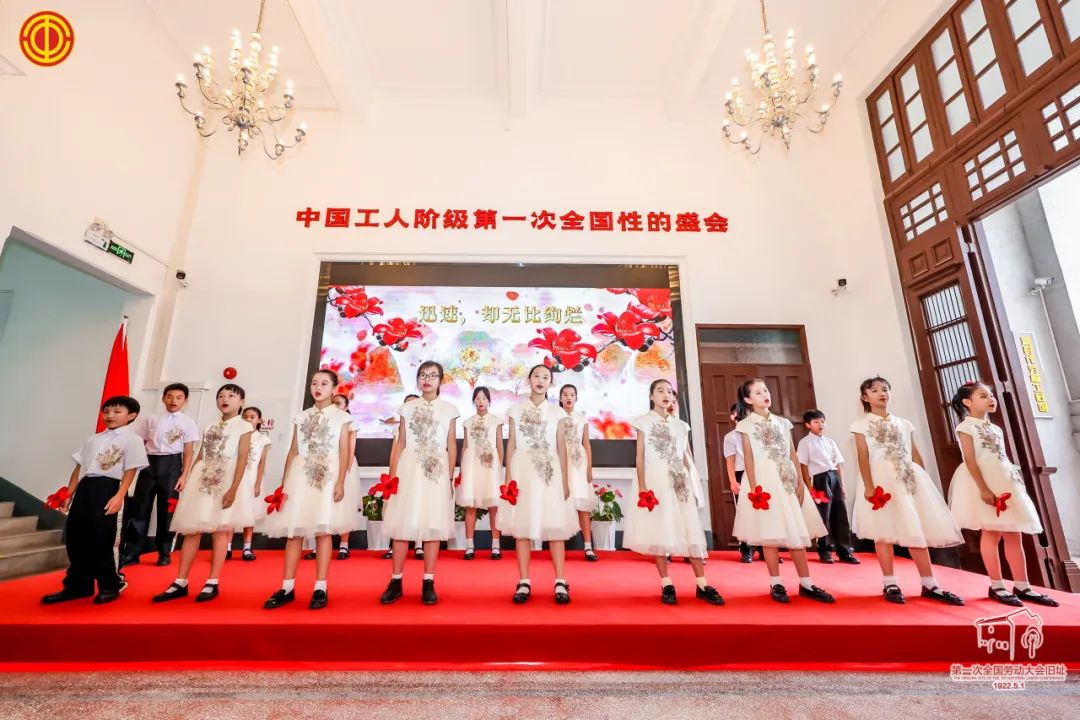
For training activities, clear sound quality is key. Whether it is skill training or ideological and political culture training, the knowledge points and concepts conveyed by the lecturer need to be accurately conveyed to each student through the sound system. Students should be able to easily distinguish changes in voice tone, emphasis on key content, etc. Therefore, the sound system should have excellent sound quality reproduction, such as clear and sharp high notes, full mid notes, and steady and not too dull low notes, in order to create a good training atmosphere and improve training effectiveness.
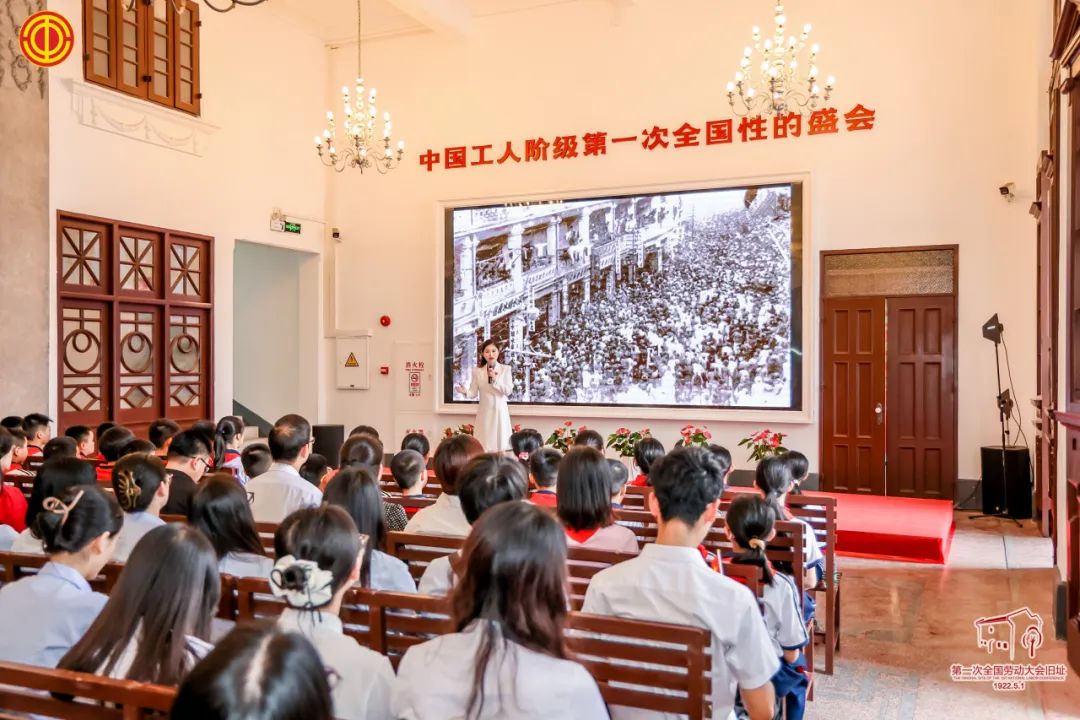
In terms of ideological and political cultural activities, there may be forms such as recitation, speeches, and performances with red cultural themes. At this time, it is not only required that the sound can accurately cover the entire audience, but also that the sound system can well reproduce the emotions of recitation, the infectiousness of speeches, and the expressive power of various sound effects in performances, so that participants can immerse themselves in it, deeply feel the charm of red culture, and inherit the red genes. Therefore, there are also high requirements for the sound system in terms of sound hierarchy and three-dimensional sense.
Selection of audio system equipment
Main expansion line array
It is crucial to choose a suitable main and expansion line array at the site of the first National Labor Congress, which has special historical significance and diverse usage scenarios. Using the VQ series two-way line array speakers from VALTEC TUBESOUND, a powerful line sound source is composed of 8 speakers and 4 W118A sub low frequency speakers, creating a dynamic and continuous high sound pressure level acoustic effect.
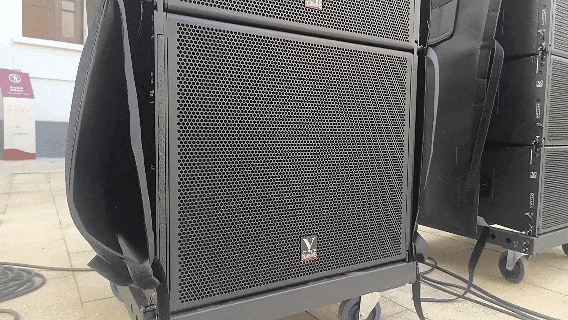
As one of the main products of VALTEC TUBESOUND, the voice of the theater, it has many advantages. The birth of mature and reliable line array technologies, such as the new generation neodymium magnetic unit, BASS PHASE TYPE TM low-frequency phase plug technology (patented technology for low-frequency phase plug loading), and optimized acoustic structure enclosure, is of great significance and redefines our understanding of the past. External high-power amplifier driver, supplemented by DSP line array controller and software, efficiently and quickly obtains linear smooth high sound pressure sound. Its product has a small volume, which can effectively reduce storage and transportation costs; Lightweight, easy to install and disassemble; Equipped with amplifier cabinets, making debugging easier; Moreover, the sound pressure is high, and the same number of speakers can meet greater performance needs, making it suitable for places such as theaters, multi-purpose halls, and churches.
Peripheral equipment configuration
In the professional audio system at the site of the first National Labor Congress, the configuration of peripheral equipment cannot be ignored. They play an important role in ensuring sound transmission and enhancing flexibility in use.
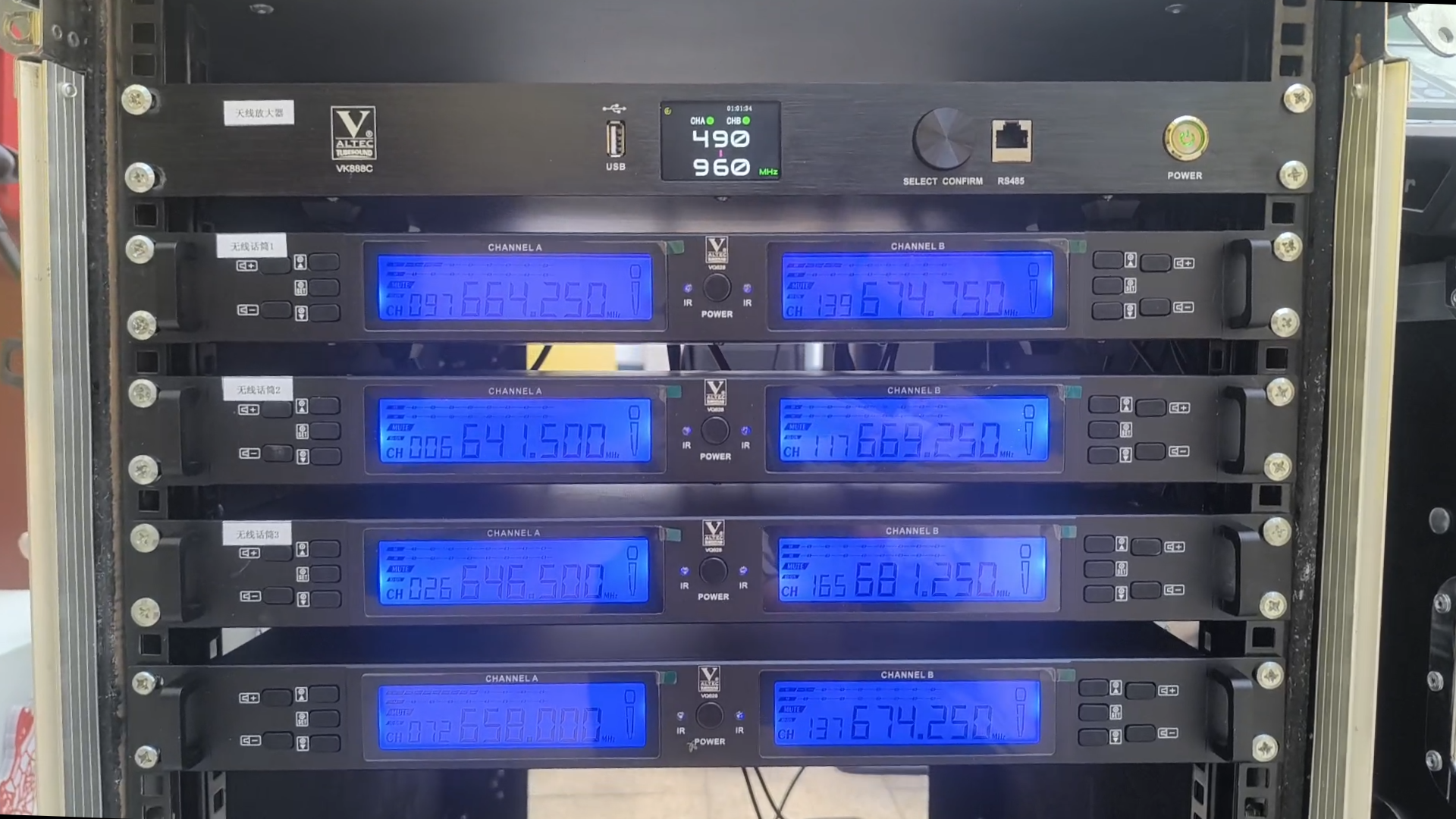
Firstly, wireless microphones can achieve wireless transmission of sound in various activities such as speeches, performances, and conferences, freeing users from cable constraints and providing them with greater activity space.
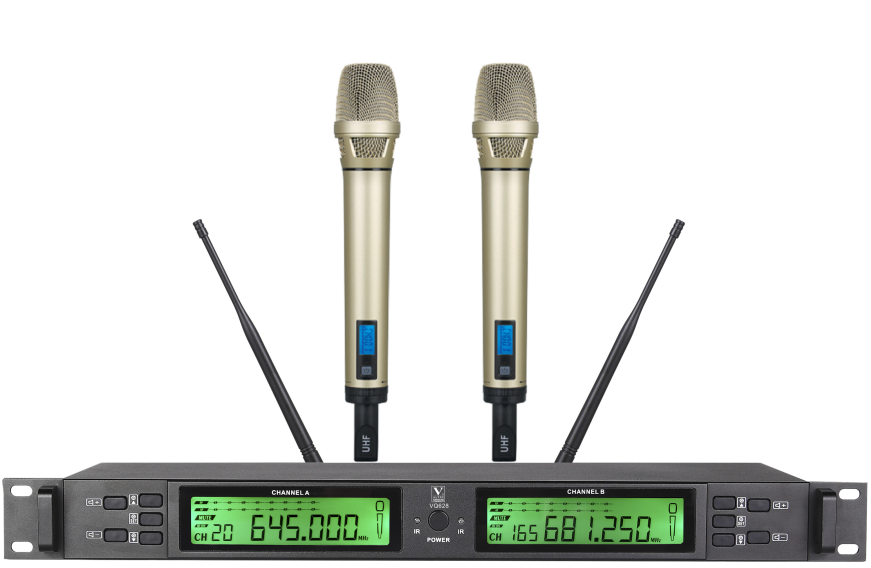
VQ628 true graded wireless microphone with built-in frequency automatic scanning function. The scanning results can be viewed on the LCD screen, allowing for quick search and locking of undisturbed frequencies during operation. Super strong anti-interference ability, can effectively suppress external noise interference and same frequency interference, providing 2 antenna channels (BNC interface), 2 balanced independent audio outputs (XLR interface), and 1 unbalanced mixed audio output (Ø 6.35mm interface). Using UHF600-699MHz frequency band carrier, PLL phase-locked loop design, true diversity superheterodyne secondary frequency conversion. The host adopts a pure automatic selection (true diversity) receiving design, which not only has a long receiving distance, but also can eliminate receiving interruptions. The host has an effective working distance (visible distance) of 200-300 meters. The host has professional quality of high fidelity voice, powerful functions, and the most stable features, designed specifically for stage performances. The host adopts a standard cabinet design with a metal shell of 1U, which is easy to install. Equipped with a lock key function to prevent human error. By cooperating with the antenna distribution system, full wireless signal coverage can be achieved at the venue. Infrared frequency matching, interchangeable transmitters, and easy operation;
Antenna amplifiers can enhance the reception and transmission strength of wireless signals, ensuring that wireless microphones and other devices can stably transmit sound in various areas of the old site, avoiding signal interruption or instability, especially in open spaces or areas with many obstructions. Their role is particularly significant.
The DM24-PLUS digital mixing console is a key device for collecting, adjusting, and distributing various sound signals. It can control the volume and timbre effects of different sound source inputs, such as adjusting the clarity of high notes, the fullness of mid notes, and the stability of low notes. It can also perform mixing operations, mixing multiple sound signals into appropriate proportions according to requirements, and outputting them to meet the diverse sound processing requirements of various activities.
Digital amplifiers can amplify audio signals, drive speakers to produce sound, and have advantages such as high efficiency, small size, and light weight. Compared with traditional amplifiers, they not only ensure sound quality, but also better adapt to the space utilization and energy consumption considerations of modern audio systems, providing strong support for presenting high-quality sound effects at the site of the first National Labor Congress.

The VN series digital power amplifier adopts advanced CMOS technology, advanced Class-D and efficient SMPS module design, with extremely high efficiency, extremely low heat generation, reliable and durable, strong resistance to breakdown, clean sound, and low distortion; Equipped with PFC, it can operate stably within the full voltage range (80V-296V) and adapt to harsh power grid environments; Stable and reliable 2 Ω driving capability, two channel and four channel design, perfectly suitable for various audio systems; Adopting active PFC and soft switching technology, the power correction factor can reach up to 0.99, with strong adaptability; A standard chassis space of 1U height can provide powerful power, low loss, energy-saving and environmentally friendly, and save operating costs; Adopting international high-end manufacturer components, advanced and reliable circuits, standardized production processes, and high-quality products; Through rigorous reliability, adaptability to high and low temperature environments, user experience, and other tests; Circuit full protection: soft start, DC, sub audio, high frequency, overheating, short circuit, silent startup and shutdown; Suitable for linear arrays, bars, outdoor performances, conference rooms, cinemas, music bars, background music, and any occasion that requires sound reinforcement;
By properly configuring these peripheral devices and forming an organic whole, the sound system can perform at its best in various activities at the old site, providing participants with a high-quality auditory experience.
Outlook for Later Maintenance and Upgrades
Daily maintenance strategy
The professional audio system at the site of the first National Labor Congress is essential for daily maintenance to ensure its normal operation. The following are some specific maintenance measures:
1. Preventive examination:
Relying on human sensory perception and cooperating with necessary inspection tools and instruments to inspect audio equipment. Strictly implement the plan in depth, covering the operating conditions, working accuracy, functional characteristics, wear resistance, and corrosion measurement and verification of audio equipment. Comprehensively grasp the specific wear and tear performance of the audio system through preventive inspections, prepare for repairs, and regularly record them. In the debugging, operation, and maintenance management of audio systems, a holistic design approach and application of maintenance rules are adopted to strengthen maintenance as a proactive measure, including strict maintenance institutionalization requirements, and overall management throughout the entire process of technology, economy, organizational measures, and equipment life cycle. Maintenance personnel need to predict the possible locations and causes of equipment failures that may affect operational safety, effectiveness, quality, parameters, structural deformation, displacement, and wear of components, and take targeted measures to solve them.
2. Equipment repair:
Mainly used to repair equipment damage, accuracy degradation, and other issues caused by daily abnormal reasons. By repairing or replacing components, the performance of the equipment can be improved to ensure that the audio system returns to a normal and orderly working environment. Specific repair methods can include regular repairs, inspections, and post repair. Maintenance personnel should recognize the importance of daily maintenance and upkeep from a ideological perspective and implement it deeply, effectively tap into the potential of audio system applications, and do a good job of linkage with other personnel; Implement fault prevention management for specific maintenance priorities; Adjust the subjective initiative of maintenance personnel according to local conditions to improve the quality of audio system equipment repair at the venue.
3. Daily maintenance and upkeep:
Using general methods such as wiping, cleaning, lubrication, and adjustment to care for the audio system, maintaining and protecting equipment performance from a technical perspective, ensuring equipment cleanliness, good lubrication, safe operation, and stable technical status. For example, regularly wipe the surface of the machine with a clean and damp soft cotton cloth, avoid using volatile solvents and water during cleaning, and use a dry cloth to gently wipe the machine; When not in use, prevent dust from entering the interior of the device. At the same time, pay attention to the normal operation sequence of the equipment. When turning on, start from front to back, first turn on the effects device, microphone, song ordering system and other equipment, and then turn on the amplifier. When turning on, turn the volume potentiometer of the amplifier to the minimum; When shutting down, the order is reversed. First, turn off the amplifier to completely disable its amplification function, and then turn off the front-end device. When turning off the amplifier, also turn the volume potentiometer to the minimum.
4. System debugging during the performance phase:
This is a detailed supplement to the daily monitoring and testing work requirements, which not only requires the debugging personnel themselves, but also the cooperation of the singers. Specifically, it includes pre performance inspection, performance program inspection, such as adjusting the lighting position, checking whether the special effects equipment can be used normally, inspecting the circuit (checking for breakpoints, damages, and possible leakage), cleaning the dust and garbage inside and outside the audio system, and coordinating the inspection of fire prevention equipment.
5. Standardization of daily workflow:
Before the opening, debug the equipment and adjust the auxiliary equipment, circuits, etc; After resetting the stage equipment, check the performance program and modify and store any inappropriate programs; After preliminary testing, it officially enters the music and lighting synthesis testing and debugging; After the performance ends and the audience leaves, cover the curtains to protect the equipment. In short, audio maintenance must be combined with routine testing, weekly inspections, monthly maintenance, and appropriate debugging in order to comprehensively improve equipment performance.
Future upgrade direction
With the continuous development of technology, the sound system at the site of the first National Labor Congress also has broad room for upgrading, in order to better meet the needs of various activities at the site. There are possible upgrade directions in terms of intelligent control, performance improvement, etc.:
1. In terms of intelligent control:
An intelligent central control system can be introduced to achieve centralized and automated control of audio equipment. For example, by using a mobile phone or control terminal, remote operation of the audio switch, volume adjustment, sound effect switching and other functions can be carried out, making it convenient for staff to quickly adjust the audio settings according to different activity scenarios and improve work efficiency. It can also preset multiple activity modes, such as conference mode, performance mode, training mode, etc. With just one click switching, the sound system can automatically adapt to the corresponding parameters, creating the best sound effect. In addition, with the help of intelligent sensor technology, real-time monitoring of changes in the acoustic environment within the venue, such as sound reflection, echo, etc., and automatic feedback to the sound system for optimization and adjustment, ensuring that the sound always maintains high-quality output.
2. In terms of performance improvement:
In terms of the main amplifier array, it is expected to adopt speaker products with higher power, lighter weight, and better sound quality in the future, further expanding the sound coverage range while enhancing the sense of depth and three dimensionality of the sound, allowing the entire audience to enjoy an immersive auditory experience. Ultra low frequency speakers can develop towards deeper low-frequency diving, higher sound energy density, and lower distortion, enhancing the atmosphere and infectiousness of performances, cultural events, and other occasions. On peripheral devices, the anti-interference ability and pickup clarity of wireless microphones will continue to improve, and the signal processing accuracy and functional richness of audio processors will also be optimized, such as achieving finer balance adjustment and more accurate delay control. The mixing console will be further upgraded in terms of operational convenience and sound mixing effect, and the efficiency and stability of digital amplifiers will continue to improve, providing comprehensive assistance to the sound system to present more perfect sound effects for the old site activities. In short, by continuously paying attention to and introducing new technologies and equipment, the audio system will be able to better serve the diverse activity needs of the site of the first National Labor Congress, inherit red culture, and leave a profound sound imprint on every activity.
Related Cases
Audio and Video System Solution | Application Case of Baiyun Lake Street Chamber of Commerce Building
12-30-2024Lanzhou Zhixing Primary School Lecture Hall
07-14-2024Kempinski Banquet Hall Loudspeaker System
07-14-2024Yangkou Town Chemical Hall, Nantong, Jiangsu
07-14-2024Zhejiang Lanxi Zhenxing Primary School Multi functional Lecture Hall
07-14-2024Haikou Meilan Airport Lecture Hall
07-14-2024Multi functional banquet hall in Korea
07-14-2024Rudong County People's Procuratorate's Sound Reinforcement System
07-14-2024Renovation Case of Government Unit Conference Room Report Hall in Shimen Street Office, Baiyun District, Guangzhou City
07-09-2024
